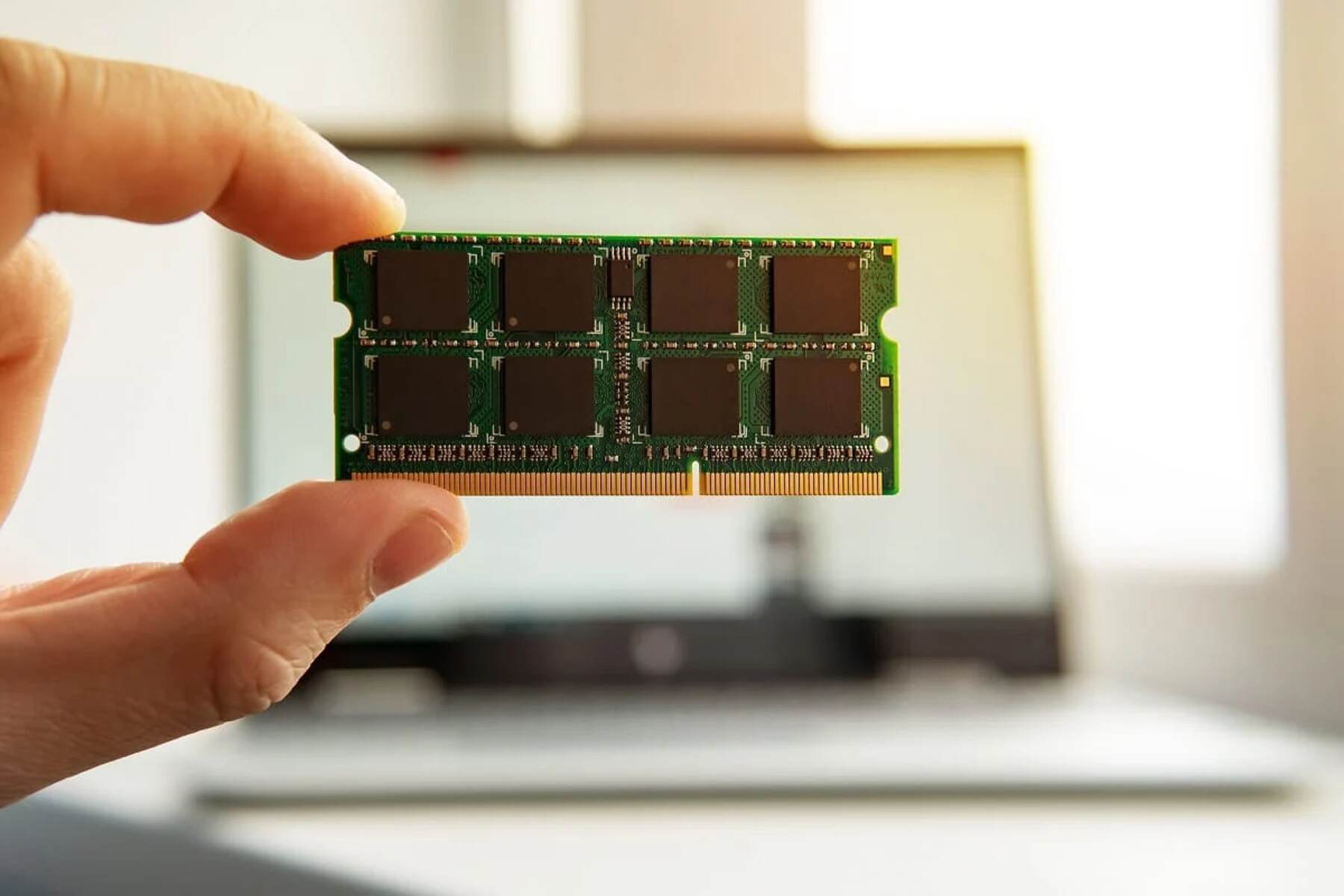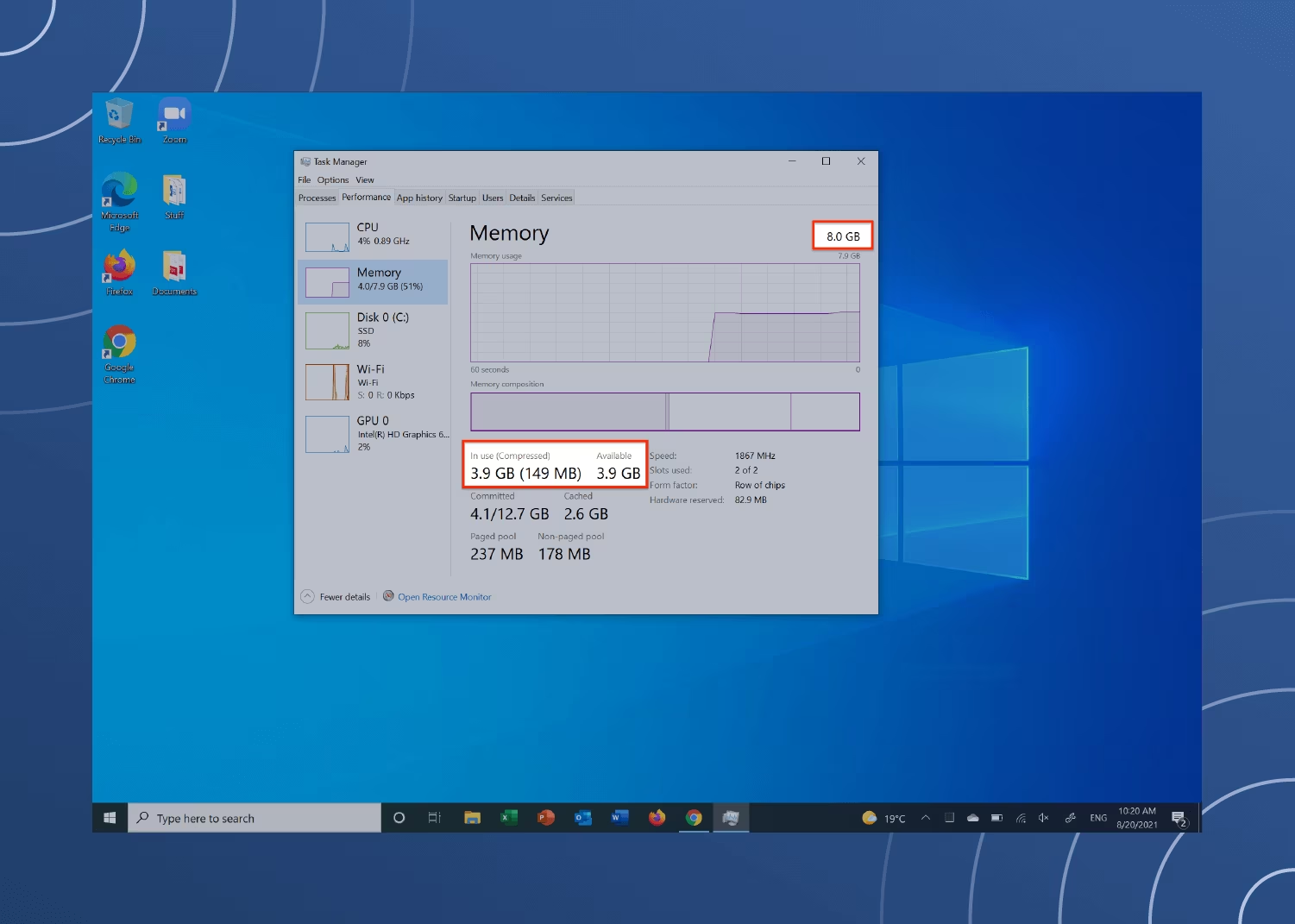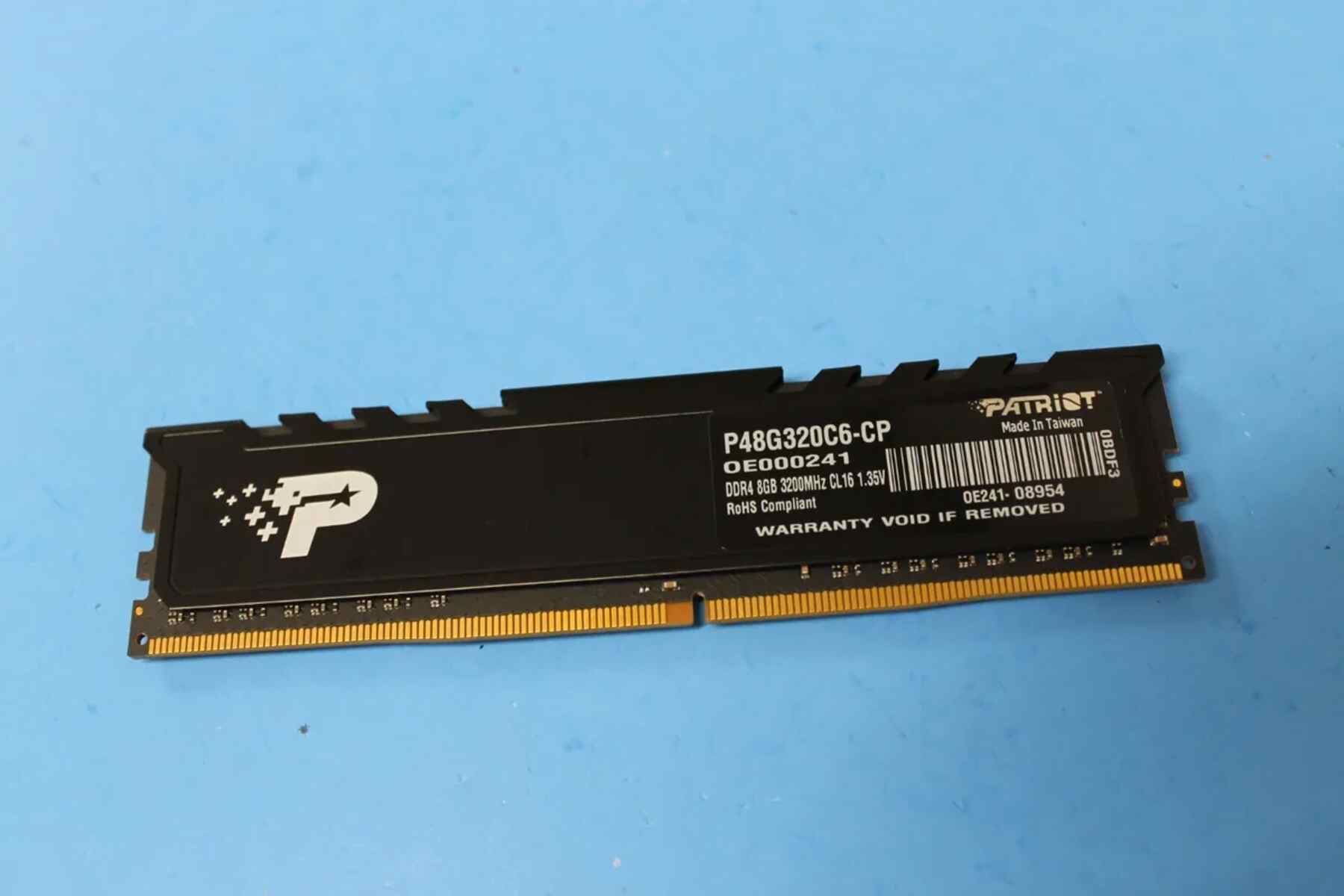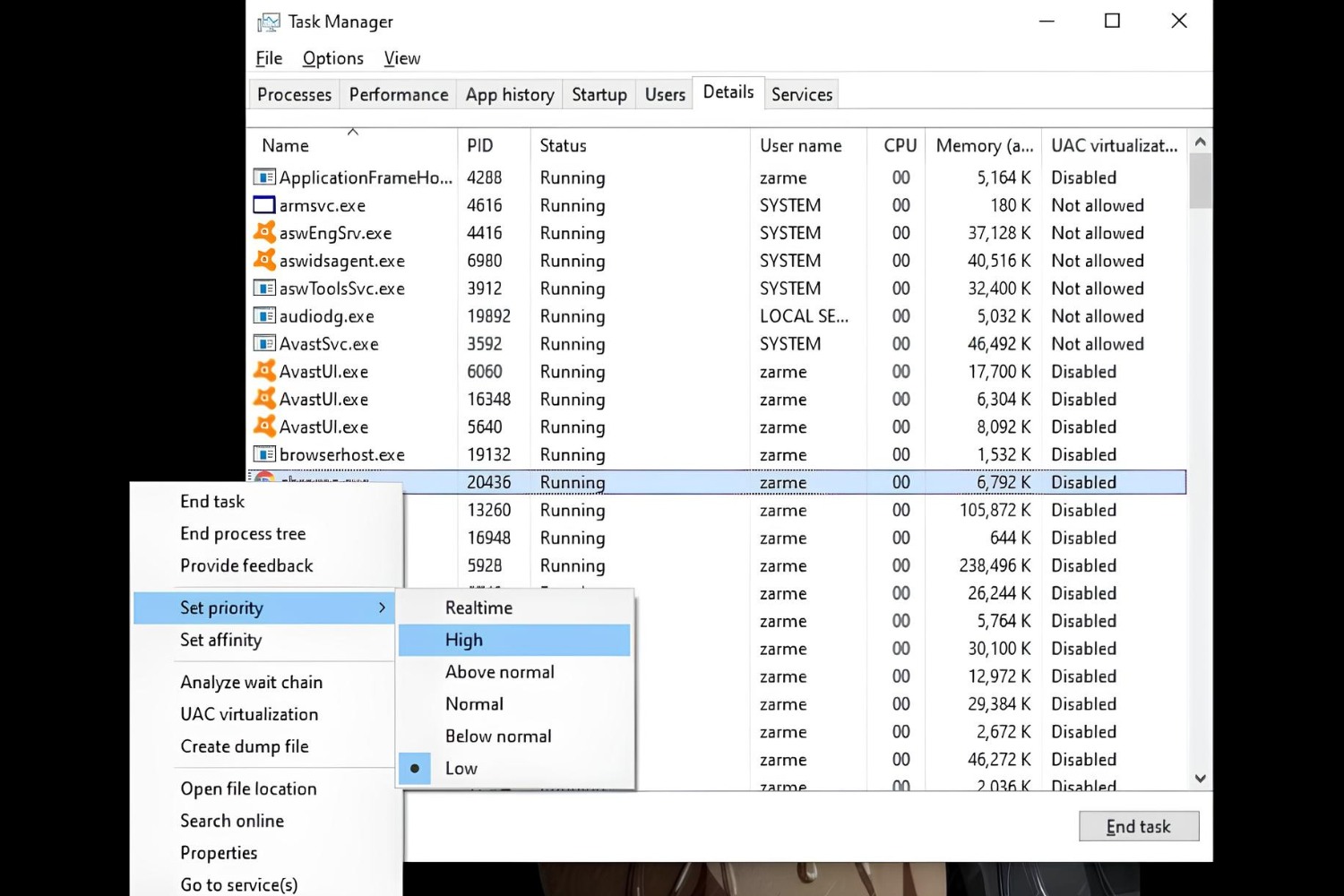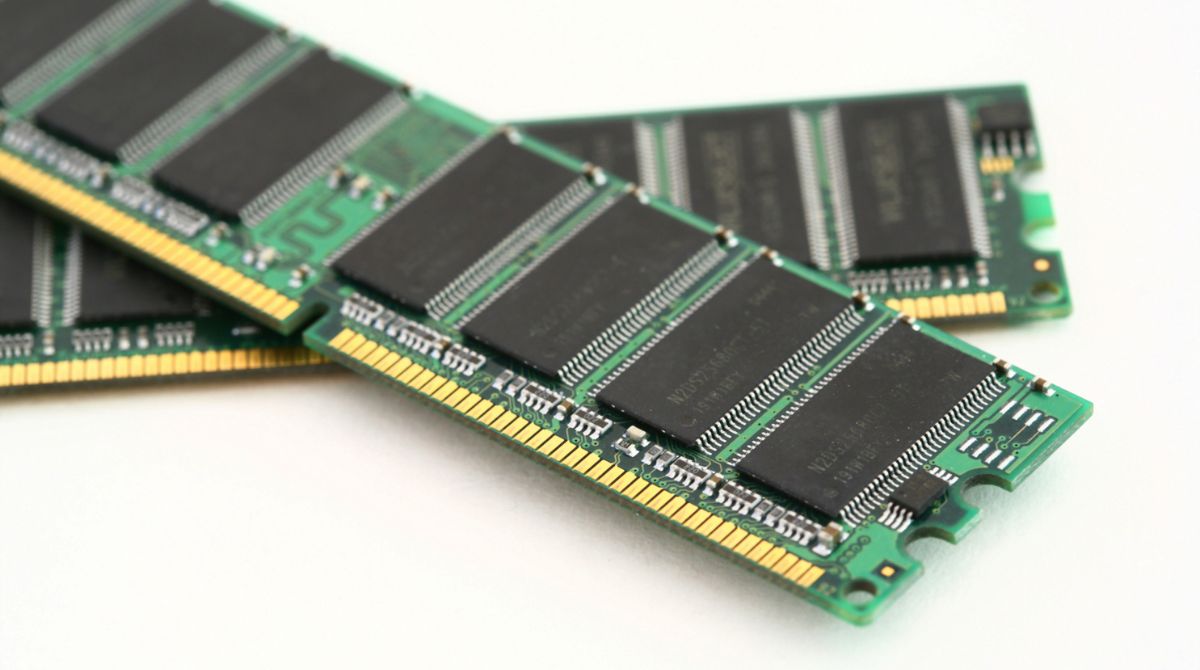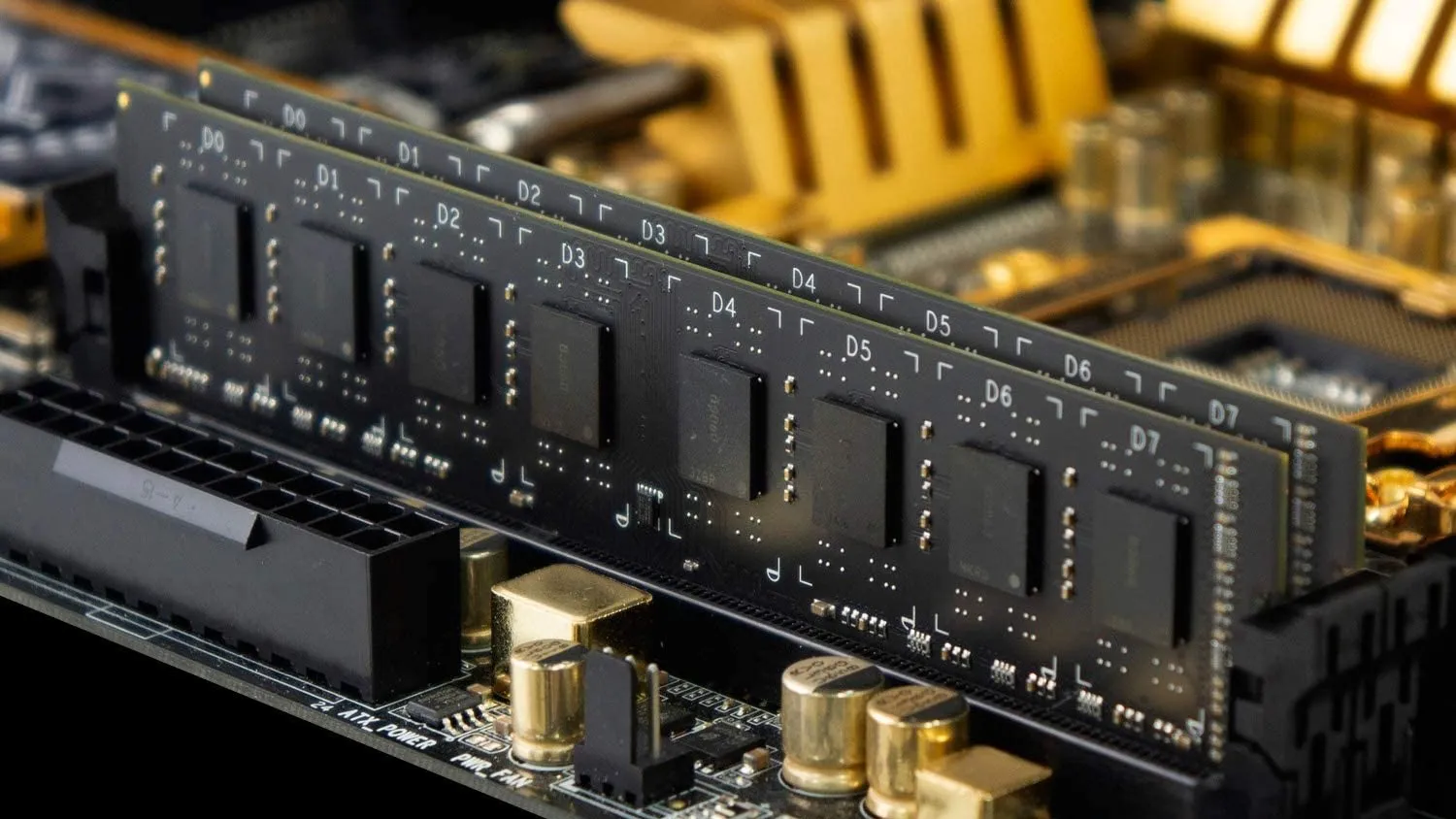Introduction
Welcome to the world of programming, where the boundaries of creativity and innovation are limitless. Whether you’re a seasoned programmer or just starting out, one question that often arises is: how much RAM is needed for programming?
RAM, or Random Access Memory, is an essential component of any computer system. It serves as a temporary storage for data that is actively being processed by the computer’s CPU. In the context of programming, having an adequate amount of RAM is crucial for smooth execution of code and efficient multitasking.
As a programmer, your RAM usage will depend on various factors, including the programming language you are using, the type of software you are developing, and the size and complexity of your projects. Understanding the RAM requirements for different programming tasks is key to maintaining optimal performance and avoiding frustrating bottlenecks.
In this article, we will explore the factors that influence RAM usage in programming and discuss the minimum and recommended RAM requirements for different programming languages. We will also consider the specific RAM considerations for web development, data science and machine learning, and video game development. Finally, we will provide some useful tips for optimizing RAM usage in your programming projects.
So, if you’re ready to dive into the world of RAM and programming, let’s get started!
What is RAM?
RAM, or Random Access Memory, is a type of computer memory that is used for temporary storage of data that is actively being processed by the computer’s CPU (Central Processing Unit). It is a vital component of any computer system and plays a crucial role in the performance and efficiency of software applications, including programming tasks.
Unlike the long-term storage provided by hard drives or solid-state drives (SSDs), RAM provides fast, temporary storage that allows the CPU to quickly access and manipulate data. It is often referred to as “volatile” memory because its content is erased when the computer is powered off or restarted.
RAM is designed to be accessed randomly, which means that the CPU can read from or write to any location in the RAM at equal speed, regardless of the physical location of the data. This random access feature enables the CPU to retrieve and store data quickly, which is essential for the smooth execution of software applications.
The size of the RAM determines the amount of data that can be stored and accessed by the CPU. Generally, the more RAM a computer has, the more data it can store and process simultaneously, leading to improved performance and multitasking capabilities.
It’s important to note that while RAM plays a crucial role in the performance of software applications, it is not the only factor that determines the overall speed and efficiency of a computer system. Other components, such as the CPU, storage devices, and graphics card, also contribute to the overall performance.
Now that we have a basic understanding of what RAM is and how it functions, let’s explore how RAM affects programming and the specific RAM requirements for different programming tasks.
How Does RAM Affect Programming?
RAM plays a significant role in the execution of software applications, including programming tasks. The amount of RAM available on a computer system can greatly impact the performance and efficiency of the programming process. Here’s how RAM affects programming:
1. Speed of Execution: When a program is running, it needs to load various components and data into the RAM for the CPU to access and process. Having sufficient RAM allows the CPU to quickly retrieve the required data, resulting in faster execution times. Insufficient RAM can lead to delays and slow down the programming process.
2. Handling Large Datasets: Many programming tasks involve working with large datasets, such as handling vast amounts of data in data science or processing high-resolution images in graphic design. Having enough RAM ensures that the computer can hold and manipulate these large datasets efficiently, without encountering performance issues or crashing.
3. Multitasking: Programmers often work with multiple software applications simultaneously, such as an Integrated Development Environment (IDE), web browser, and command-line interface. Each of these applications requires memory to operate, and having sufficient RAM allows for smooth multitasking without experiencing lag or system slowdowns.
4. Compiling and Running Code: Compiling and running code can be memory-intensive tasks, especially for complex programs. The compiler needs to load the source code and various libraries into the RAM to create the executable file. Insufficient RAM can result in slow compilation times and may even lead to compilation errors.
5. Avoiding Out-of-Memory Errors: Insufficient RAM can lead to out-of-memory errors, where the program exceeds the available memory and crashes. This can happen when working with large datasets, running resource-intensive tasks, or using memory-heavy programming languages. Having enough RAM helps prevent these errors and ensures smooth execution of the code.
Overall, having adequate RAM is essential for efficient and smooth programming. It allows for faster execution, seamless multitasking, and the handling of large datasets without performance issues. As a programmer, it’s important to consider the RAM requirements for your specific programming tasks to ensure optimal performance and productivity.
Minimum RAM Requirements
The minimum RAM requirements for programming can vary depending on several factors, including the programming language, development environment, and the complexity of the projects you are working on. While specific requirements may vary, here are some general guidelines to consider:
1. Basic Programming: For simple programming tasks like writing scripts or small applications, a minimum of 4 GB of RAM is usually sufficient. This allows for smooth execution of lightweight programs and basic code editing.
2. Web Development: If you’re working on web development projects, especially those involving front-end development, a minimum of 8 GB of RAM is recommended. This is because web development often involves running web browsers, IDEs, servers, and other applications simultaneously, which can consume significant memory.
3. Mobile App Development: Mobile app development, especially for resource-intensive platforms like Android, typically requires a minimum of 8 GB of RAM. Testing and running emulators or virtual devices alongside the development environment can be memory-intensive and may require more RAM.
4. Data Science and Machine Learning: Data science and machine learning tasks often involve working with large datasets and running resource-intensive algorithms. For these tasks, a minimum of 16 GB of RAM is recommended, although more may be required for complex projects involving deep learning or big data analysis.
5. Video Game Development: Developing video games can be demanding on system resources, including RAM. A minimum of 16 GB of RAM is typically recommended for working with game engines and handling graphical assets. More RAM may be necessary for complex game development or virtual reality (VR) applications.
Keep in mind that these minimum requirements are intended as a starting point. Depending on your specific programming tasks and the tools you are using, you may need to allocate more RAM for optimal performance. It’s also worth considering future scalability and the potential for growth in your projects when determining the amount of RAM to invest in.
While having an adequate amount of RAM is crucial for programming, it’s important to note that RAM alone is not the sole factor in determining a computer’s performance. Other components, such as the CPU, storage devices, and graphics card, also play a role in overall system performance.
Now that we’ve explored the minimum RAM requirements for programming, let’s move on to discussing the recommended RAM for different programming languages.
Recommended RAM for Different Programming Languages
The recommended RAM for different programming languages can vary based on the specific requirements and resource consumption of each language. While these recommendations can serve as general guidelines, keep in mind that the memory requirements may vary based on the complexity of your projects and the specific tools or libraries you are using. Here are some recommendations for popular programming languages:
1. Python: Python is known for its simplicity and readability, making it a popular choice for beginners and experienced programmers alike. For most Python programming tasks, a minimum of 8 GB of RAM is recommended. However, if you are working with large datasets or running memory-intensive algorithms, you may need 16 GB or more.
2. Java: Java is a versatile language used for a wide range of applications. For basic Java programming, 8 GB of RAM is typically sufficient. However, for complex enterprise-level projects or when using memory-heavy frameworks like Spring or JavaFX, a minimum of 16 GB or more is recommended.
3. C++: C++ is known for its performance and low-level control, making it a popular choice for system programming and game development. For most C++ programming tasks, 8 GB of RAM is sufficient. However, for resource-intensive projects like game development or working with large amounts of data, 16 GB or more may be needed.
4. JavaScript: JavaScript is primarily used for web development and runs on the client-side in modern web browsers. For basic JavaScript programming, 4 GB of RAM is often enough. However, if you’re working on complex web applications or using memory-intensive frameworks like Angular or React, 8 GB or more may be required.
5. Ruby: Ruby is known for its simplicity and productivity, making it a popular choice for web development and scripting. For most Ruby programming tasks, 4 GB of RAM is typically sufficient. However, if you’re working on memory-intensive tasks or using frameworks like Ruby on Rails, you may need 8 GB or more.
Remember, these recommendations are general guidelines and can vary based on the specific requirements of your projects and the tools you are using. It’s always a good idea to consider the scalability of your projects and allow for potential growth when determining the amount of RAM to allocate for programming tasks.
Now that we have discussed the recommended RAM for different programming languages, let’s explore specific RAM considerations for web development.
RAM Considerations for Web Development
Web development involves creating and maintaining websites and web applications, which often require multiple software components to run simultaneously. Here are some RAM considerations to keep in mind for web development:
1. Running Web Browsers: Web developers frequently need to test their websites across different web browsers to ensure compatibility. Each web browser consumes memory, and having sufficient RAM allows for smooth browsing and testing without experiencing performance issues or slowdowns.
2. Development Environment: Web development often involves working with Integrated Development Environments (IDEs) or code editors, which can be memory-intensive applications. Additionally, running servers, debuggers, and other development tools alongside the IDE can further increase RAM requirements.
3. Virtual Environments and Containers: Web developers often use virtual environments or containers, such as Docker, to manage dependencies and ensure consistent development environments. These virtualization technologies can consume additional memory, so having enough RAM is crucial for smooth operation.
4. Handling Large Datasets: Web applications that deal with large databases or process substantial amounts of user-generated content may require more RAM to efficiently handle and manipulate the data. This is particularly true for e-commerce websites, social media platforms, and content-heavy applications.
5. Scalability and Traffic Spikes: Websites and web applications can experience sudden spikes in traffic, such as during promotional events or when going viral. Having sufficient RAM allows your server to handle increased traffic without slowing down or crashing, ensuring a seamless user experience.
6. Caching and Performance Optimization: Caching mechanisms, such as browser caching, CDNs (Content Delivery Networks), and server-side caching, can significantly improve web performance by reducing the need for frequent data retrieval. However, caching can consume additional memory for storing and managing cached data.
Considering these factors, a minimum of 8 GB of RAM is generally recommended for web development. This provides enough memory to run web browsers, development environments, and server-side components simultaneously. However, keep in mind that the specific requirements may vary depending on the complexity of your web projects and the technologies you’re utilizing.
By ensuring sufficient RAM for web development, you can optimize performance, handle large datasets, and effectively manage concurrent tasks, ultimately creating robust and responsive web experiences for your users.
Now that we’ve covered RAM considerations for web development, let’s move on to discussing RAM considerations for data science and machine learning.
RAM Considerations for Data Science and Machine Learning
Data science and machine learning tasks involve processing and analyzing large datasets and executing complex algorithms. These tasks are often resource-intensive and can benefit from sufficient RAM. Here are some RAM considerations specifically for data science and machine learning:
1. Handling Large Datasets: Data science projects often involve working with substantial amounts of data, ranging from gigabytes to terabytes. Having enough RAM is crucial to load and manipulate these datasets efficiently, enabling faster data processing and analysis.
2. Memory-Intensive Algorithms: Many machine learning algorithms, such as deep learning neural networks, involve complex mathematical operations and require significant memory to store and process intermediate calculations. Insufficient RAM can limit the size and complexity of models that can be trained.
3. Preprocessing and Feature Engineering: Data preprocessing and feature engineering involve manipulating and transforming the raw data into a suitable format for machine learning models. These tasks can require substantial memory, especially when dealing with high-dimensional datasets or applying advanced feature engineering techniques.
4. Model Training and Evaluation: Training machine learning models is a memory-intensive process, as it requires storing and processing large amounts of data. The RAM can impact the size of training batches, the complexity of the model architecture, and the speed of convergence during the training process.
5. Ensembling and Model Stacking: Ensemble learning techniques, such as combining multiple models or stacking models, can lead to improved predictive performance. However, ensembling can require additional memory as multiple models need to be loaded and predictions from each model need to be combined.
6. Hyperparameter Optimization: Tuning the hyperparameters of machine learning models often involves running multiple training iterations with different parameter configurations. Each iteration requires storing and processing the data, which can consume significant memory when conducting extensive hyperparameter optimization searches.
Given these considerations, having a minimum of 16 GB of RAM is recommended for data science and machine learning tasks. However, for complex projects, especially those involving deep learning or big data analysis, even higher RAM capacities, such as 32 GB or more, may be necessary to ensure smooth execution and prevent out-of-memory errors.
By allocating sufficient RAM for data science and machine learning projects, you can handle larger datasets, train more complex models, and improve the effectiveness and efficiency of your machine learning workflows.
Now that we’ve explored RAM considerations for data science and machine learning, let’s move on to discussing RAM considerations for video game development.
RAM Considerations for Video Game Development
Video game development is an intricate and resource-demanding process, requiring substantial memory resources. Here are some RAM considerations to keep in mind for video game development:
1. Game Engines and Tools: Video game development often involves using powerful game engines and development tools, such as Unity or Unreal Engine. These tools can be memory-intensive, requiring a significant amount of RAM to run smoothly and efficiently.
2. Asset Management: Video games require various assets, including 3D models, textures, animations, and audio files. These assets occupy memory, and having enough RAM allows for efficient loading and processing of these assets during gameplay.
3. Runtime Memory Requirements: While developing games, it’s important to consider the memory requirements at runtime. This includes allocating memory for game objects, scripts, AI systems, physics simulations, and audio buffering. Sufficient RAM ensures that the game can run smoothly without noticeable lag or performance issues.
4. Testing and Debugging: During game development, testing and debugging are essential stages to identify and resolve issues. Running the game alongside debugging tools, such as profilers or memory analyzers, can add memory overhead. Having enough RAM ensures that testing and debugging processes can be performed efficiently.
5. Virtual Reality (VR) Development: Virtual reality games require even more RAM due to the immersive nature of the experience. VR games often demand higher-resolution textures, complex physics simulations, and real-time rendering, all of which put a strain on memory. A generous amount of RAM is crucial for smooth VR gameplay.
6. Multiplayer and Online Features: If your game involves multiplayer or online features, additional memory is required to handle network connections, player data, and server-side processes. Having sufficient RAM enables a seamless multiplayer experience, preventing network lag and ensuring smooth gameplay.
Considering these factors, a minimum of 16 GB of RAM is generally recommended for video game development. However, for more complex game projects, especially those involving extensive asset libraries, sophisticated physics simulations, and VR capabilities, allocating 32 GB or more of RAM may be necessary.
By providing sufficient RAM for video game development, you can optimize performance, enhance gameplay experiences, and avoid memory-related issues that can impact player immersion and satisfaction.
Now that we’ve covered RAM considerations for video game development, let’s explore some tips for optimizing RAM usage in programming tasks.
Tips for Optimizing RAM Usage in Programming
Optimizing RAM usage in programming is crucial for efficient execution of code and optimal system performance. Here are some tips to help you optimize RAM usage in your programming tasks:
1. Use Efficient Data Structures: Choose data structures that minimize memory consumption while still meeting the requirements of your program. For example, consider using dynamic arrays (vectors) instead of linked lists when random access is required but the size of the data can vary.
2. Avoid Memory Leaks: Be mindful of allocating memory dynamically and ensure that you deallocate memory when it is no longer needed. Failing to do so can lead to memory leaks and can cause your program to consume unnecessary memory over time.
3. Limit Unnecessary Data Duplication: Avoid creating unnecessary copies of data. Instead, use references or pointers to access and manipulate data as needed. This can help reduce memory usage, especially when working with large data sets or when passing parameters to functions.
4. Manage Memory Intensive Operations: For tasks that require substantial memory, such as image processing or data analysis, consider breaking them down into smaller, more manageable chunks. This can help avoid overwhelming the RAM and optimize memory usage during computation.
5. Streamline File I/O Operations: When reading or writing large files, instead of loading the entire file into memory, process the data in smaller chunks. This can help reduce the memory footprint and improve the efficiency of file operations.
6. Optimize Algorithmic Efficiency: Analyze and optimize the algorithms used in your programs to minimize unnecessary memory usage. Focus on reducing redundant calculations, eliminating unnecessary data copying, and optimizing resource-intensive loops or recursive functions.
7. Profile and Monitor Memory Usage: Use profiling tools to monitor and analyze the memory usage of your programs. Identify potential bottlenecks or areas of high memory consumption and optimize them accordingly. Understanding how your program utilizes memory can help you make informed decisions to improve its efficiency.
8. Close Unused Resources: Make sure to release system resources, such as file handles or database connections, when they are no longer needed. Failing to close unused resources can lead to memory leaks and unnecessary memory consumption.
9. Regularly Update and Optimize Libraries: Keep your programming libraries and frameworks up to date. Updated versions often contain bug fixes and performance improvements, which can help optimize memory usage and overall program efficiency.
By implementing these optimization techniques, you can improve the performance of your programs, minimize memory usage, and ensure a smooth and efficient programming experience.
Now that we’ve discussed tips for optimizing RAM usage in programming, let’s wrap up this article.
Conclusion
In conclusion, understanding and optimizing RAM usage is crucial for efficient programming tasks. RAM, or Random Access Memory, plays a significant role in the speed, performance, and multitasking capabilities of your programs.
We began by exploring what RAM is and how it affects programming. We discussed the importance of having sufficient RAM to ensure smooth execution, handle large datasets, and avoid out-of-memory errors. We then delved into specific RAM recommendations for different programming languages and considered the RAM considerations for web development, data science and machine learning, and video game development.
For web development, having enough RAM allows for smooth browsing, development environment operation, and handling large datasets. Data science and machine learning tasks require higher RAM capacities to handle large datasets, memory-intensive algorithms, and complex model training processes. Video game development demands generous RAM allocations for running game engines, managing assets, and handling runtime memory requirements.
Additionally, we provided tips for optimizing RAM usage in programming tasks, such as using efficient data structures, managing memory-intensive operations, and streamlining file I/O operations. By following these tips, you can optimize the performance and efficiency of your programs while minimizing unnecessary memory consumption.
Remember, while RAM is essential, it is just one component that contributes to overall system performance. It’s important to consider the other factors, such as the CPU, storage devices, and graphics card, to create a well-rounded and powerful programming environment.
In conclusion, understanding the RAM requirements for your programming tasks and implementing strategies to optimize its usage will streamline your workflow, enhance performance, and increase productivity. By harnessing the power of RAM effectively, you can unlock the true potential of your programming endeavors.









